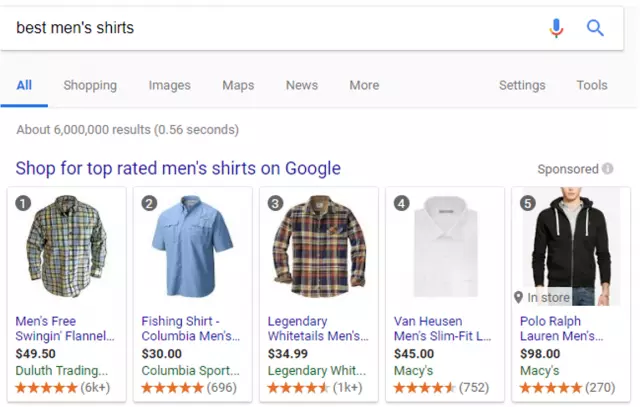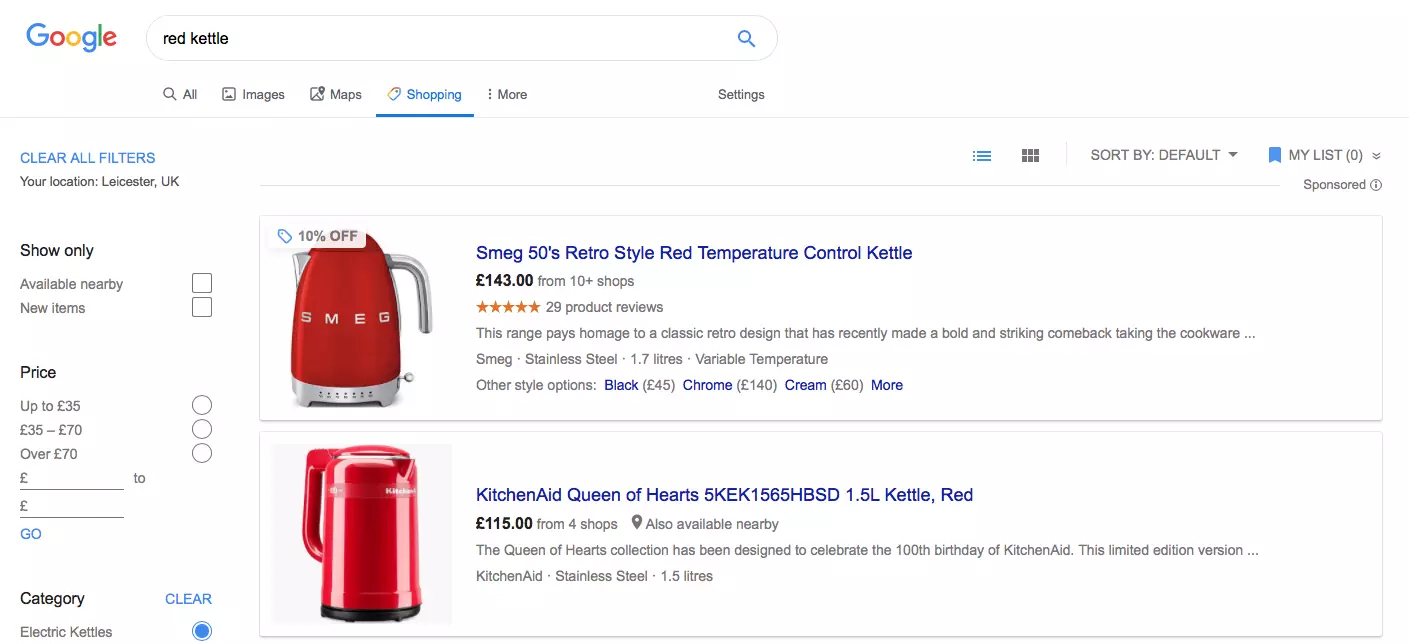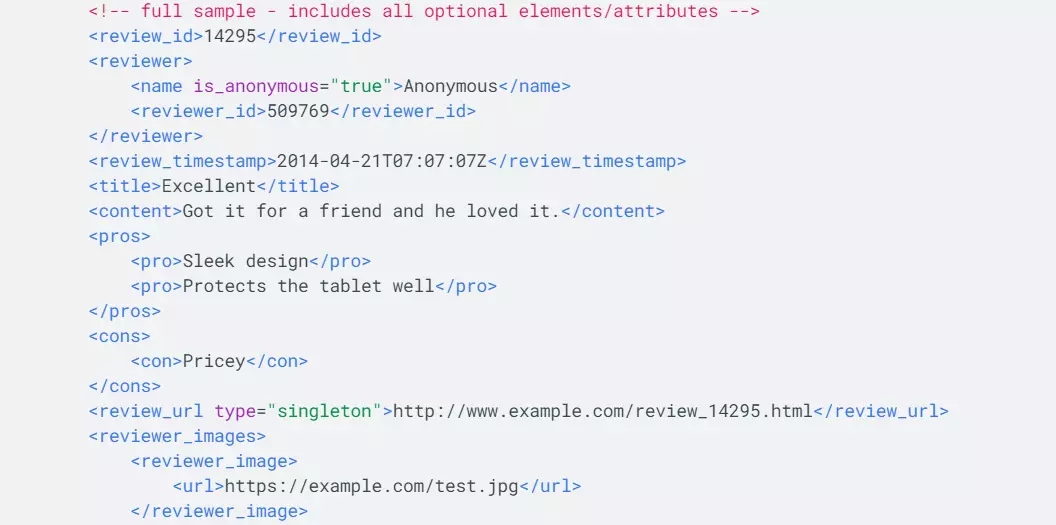When you learn how to get products on Google Shopping, don’t miss out on Google product rating. Because most shoppers rely on ratings when decide to spend their money. The truth is they will read the online reviews before going to an online store. And 88% of shoppers believe online reviews as much as personal advice. What makes them so crucial, and what can you do to obtain them? Let’s take a look at how to include Google Product Rating in your listings and the benefits it brings to your business.
What is Google Product Rating?
Google Product Rating allows shoppers to discover how previous buyers reviewed a specific product. You’re probably familiar with the 5-star rating system if you’ve ever used Google Shopping.
The rating scale runs from 1 to 5, and it provides an overall judgment of the product’s performance. The reviews above are only about the product, not the seller. They may also appear in organic search results on occasion.
When you click on a Google Product Rating, you’ll be transported to a product page with further information. Customers’ entire Google ratings and reviews are available from this more in-depth location. What’s more, you can examine the list of merchants bidding on the item, as well as information like pricing, offers, and Seller Ratings, from there.

In actuality, not every product displayed will have a rating below it because merchants must take action for this to happen.
How Does Google Product Rating Work?
Algorithms collect and integrate product reviews from numerous stores, marketplaces, and third-party review sites. It occurs as a result of universally utilized unique product identifiers. We talk here about GTINs, brands, MPNs, or product URLs.
A question determines the outcome. If it’s more particular, such as brand, color, or model, Google Product Rating will be compiled from reviews you and only you have collected for that product, whether it’s through Google Customer Reviews, your own website, or a third-party review partner.
If you conduct a generic search, it will display a list of results with ratings only where they are relevant. By clicking on the specific listing, you can find merchants who sell that item.

What is the Difference Between Product and Seller Ratings?
Seller ratings and product ratings may appear to be the same thing, and they may even be misleading. They do, however, have very different but equally crucial tasks to play.
- Google Shopping’s Product Ratings are based on a five-star rating system and apply to individual products.
- For qualifying merchants, Google Shopping also shows seller ratings, which are different from product ratings.
- Seller ratings are for your entire business, whereas product ratings are for individual products.
- A brand gets a score from Google seller ratings. They’re based on Google reviews and a variety of other review sites including Trustpilot and PowerReviews.
- Seller ratings appear in the result of organic search, as well as Google Ads search and Google Shopping listings.
- Product reviews assist with both SEO and on-site conversion. Seller reviews aid in the development of reputation, trust, and differentiation from your competition.
How to Show Google Product Ratings to Your Listings?
Let’s take a step-by-step look at how you can ensure that your products get ratings.
1. Make sure you fully meet all of the standards and policies
Requirements
- You must have a Google Merchant Center account in order to run Shopping advertising.
- Wherever Google Shopping and free listings are currently accessible, product review Google is eligible to appear. There are now 104 countries that are supported. Some of them are in beta, and some of them require a company registration number (BRN) in order to sell, so it’s ideal to double-check before you go.
- For ratings to appear on the products you list on Google Shopping, you must have a minimum of 50 reviews for all of your products.
Policies
- Keep Google up to date on all of your reviews on a monthly basis. This includes any bad feedback you may receive. While monthly updates are required, Google recommends that they be delivered more regularly so that shoppers get the most up-to-date information.
- The reviews themselves must adhere to the content restrictions, which include not being spam, no hate speech, and no duplicate reviews, among other things.
- Your review feeds should be of excellent quality, and the reviews should be useful to buyers considering purchasing your goods.
- Retailers should gather and control their own customer reviews.
You can go to the following step of seeking to enroll in the program once you’re certain you’ve completed all of these requirements.
You may also care about how to set up Google Remarketing Campaigns for targeted advertising and improved conversion rates.
2. Contact Google and ask to be a member of the Product Reviews program
You’re now ready to submit your request to Google by filling out the form. This form can be accessed in two ways.
- Step 1: Go to the Google Merchant Center and fill out the form there.
- Step 2: Log into your Merchant Center account > Manage programs > scroll to the bottom of the page > Find Product Ratings > Click on ‘Get Started’
Before you can upload your review feed, you’ll need to wait for Google to notify you that they accepted your application.
3. Choose whether you’ll use website reviews or a third-party aggregator
You have the option of collecting reviews through your own online store or using a third-party review aggregator. You have two options for collecting product reviews: using Google’s Review Collector or using a third-party aggregator. Which is the better option for you?
Choosing How to Get Reviews
Here are 3 methods for collecting reviews for your Google listings.
Use a third-party aggregator
The benefits are:
- You’ll be able to instantly build a review feed.
- It’s simple to set up a scheduled feed in Merchant Center.
- You can send a request for product reviews to all of your customers in a style that is consistent with your company’s branding.
- You’ll be able to gather information from prior reviews on different websites.
The drawbacks are:
- They are not available for free. Google has an official list of third-party review aggregators that it supports: Bazaarvoice, Ekomi, Feefo, PowerReviews, Reevoo, Review.io, Trusted Shops, Trustpilot, Verified Reviews, and Yotpo.
Use Google Customer Reviews
This is Google’s approach to assisting businesses with the collection of reviews. It’s vital to remember that in order to use this strategy, you’ll need to give GTINs for your products.
The benefits are:
- You’ll get a Google-certified review badge for your website
- This method is free, unlike a third-party application.
- It’s incredibly easy to set up.
The drawbacks are:
- It doesn’t provide the best experience for your clients because they’ll be filling out a Google survey that you can’t personalize.
- Customers will need to opt-in before receiving a review request email after making a purchase.
How to set up Customer Review Collection:
- Go to your Merchant Center account and log in.
- Select ‘Growth’ from the left-hand navigation.
- Then select ‘Manage programs’ from the drop-down menu.
- Look for the ‘Customer Reviews’ program.
- Accept the terms and conditions by enabling them.
The next stages may involve some code to adapt the module Google provides for your website, so if you have one, you may want to enlist the services of a developer.
It’s worth noting that even if a buyer purchases many products, they’ll only receive one review survey. Then, based on some internal criteria, Google decides which item to utilize this review for.
Add reviews manually
This option is the most time-consuming because you’ll have to set up your own product review feed and collect reviews. In the next section, we’ll look at the specifics of the feed.
Google Product Rating Feed
It’s worth noting that you won’t need to submit a rating feed if you choose to get your reviews through Google Customer Reviews. If you’ve taken one of the other two options, you’ll need to submit your feed to Google Merchant Center.
Requirements:
- Only support XML files
- Need to send an update to Google at least once a month
If you’re used to uploading spreadsheet files, keep in mind that XML files are made up of code. You can read all the requirements from Google here.
The review text, photographs, and links are all part of this. As an example, consider the following:

Product Matching
Product matching is one of the most crucial things to think about while setting up product ratings on Google Shopping and constructing your feed. Google uses industry-standard identifying information to match the products in your feed to other products.
Including product identification information in your search results, as well as matching product ratings to Google, will boost your results. This is because Google will have a better understanding of the specific products you sell and will display them in relevant searches as a result.
Google uses 2 approaches to match products:
- Global Trade Item Number (GTIN) – It’s a one-of-a-kind number given to products so that they may be matched in various databases.
- The brand of the product plus its MPN – MPN stands for Manufacturer Part Number.
Ideally, you should include all three identifiers in your feed: GTIN, Brand, and MPN.
3 Great Practices for Making Product Ratings More Effective
There are a few things to keep in mind if you want to get the most out of Google Product Rating. To get the most out of your Product Ratings, follow these best practices.
1. Encourage users to leave feedback
If you don’t have enough reviews, you won’t be eligible for Product Ratings. Consumers trust ratings based on big numbers of reviews more than ratings based on small numbers of reviews, which is a strong argument to strive to collect as many as possible.
2. Don’t just focus on getting 5-star reviews
52% of people trust products with some negative reviews and low ratings more than those with solely positive reviews and high ratings. Customers are looking for ratings that appear to be authentic.
Your sales may suffer as a result of a five-star rating. The ideal rating is 4.7, which means that products with a rating of 4.7 convert better than those with a rating of 5.
This is because shoppers are aware that five-star ratings are often reserved for products with a small number of reviews (often left by people connected to the company or product in some way). A score of around 4.7, on the other hand, appears to be more genuine.
3. Ad seller ratings in addition to product ratings
Having the rating available throughout your store might also assist customers in making a purchasing decision. Qualification standards vary, however, Seller Ratings can help you increase the quality of your listings even further.
Advantages of Google Product Rating
Only 72% of respondents would make a purchase based only on product reviews and ratings. A single positive company review can increase conversions by 10%. This is how you establish trust with potential customers. You can boost your search engine presence and on-site conversions.
The advantages of having product reviews on your own site, on the other hand, differ slightly from the advantages of Google Product Rating.
Exposure and visibility of the product
Opinions have an impact on all of us. We are more likely to consider a product that has received positive feedback. A high product score will put your company ahead of the competition. It goes without saying that if a listing has a lot of favorable reviews, it will be simpler to sell because it is more visible and trustworthy to customers.
On-site conversion
We can presume that customers who arrive at your site after clicking on Google Product Ratings are nearing the end of their purchasing process. As a result, when they arrive on your site, they have a strong desire to make a purchase.
Their intention is also bolstered by the trust and confidence gained as a result of the insightful assessments and excellent scores received. This equation only leads to increased sales and profits.
Well informed customers
Reviews frequently include useful information that can make or break a sale.
Customers who are more knowledgeable about the goods are less likely to be dissatisfied. It’s one of the reasons why 78% of purchasers who read reviews are happy with their final purchase.
Customers with more expertise are more likely to trust your product and convert at a higher rate.
Google Product Rating: FAQs
- What is Google product rating?
Google product rating allows you to display reviews for your products made by customers who shop on Google Shopping which scale runs from 1 to 5 stars.
- Is Google product rating a good idea?
Yes, definitely. Having product ratings for your inventory is an excellent method to attract potential buyers to your business and offer your products instant trust and legitimacy.
Conclusion: It All Comes Down to Building Trust
Winning the trust of customers is one of the most critical aspects of successfully selling things online. You must persuade them that your product and company can meet their expectations.
Customers may not even visit your website if you don’t have Google Product Rating, so they’ll click on a link for one of your competitors who do.
To put it another way, Product Ratings help you show up in Google Shopping searches and get more clicks, which leads to more purchases.
If you are intending to expand your business into multichannel selling and need an effective tool to manage your store, we recommend LitComemrce – the easiest way to monitor everything in your multichannel store at an affordable price.
Just leave us a message in case you need more information, our support team is always ready to help.
Also, you can join our community for more exciting eCommerce news and tips
Enjoy reading!



